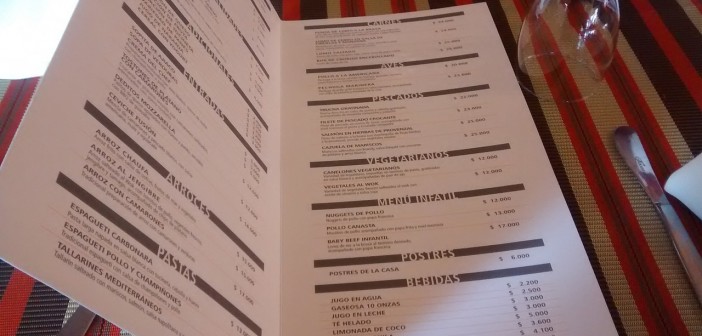Occasionally I like to visit a local Mexican restaurant. As I scan the menu, I search for items I’ve never tasted. However, I often feel a little overwhelmed by the menu that gives me pages and pages of options. Don’t get me wrong; I love variety. I love the adventure of trying new foods, but even I feel overwhelmed by so many choices. After 15 minutes of reading the daunting menu, I look up at the server and ask, “What do you recommend?” Decision made. I use both hands to give the encyclopedia back and wait for my surprise.
When people are given too many choices, they are less inclined to choose anything at all. Narrowing your church’s menu allows people to make reasoned decisions to belong and grow.
People Want Freedom
Every human being wants to be free. Nothing threatens our sense of liberty more than believing we have no options. So we insist on choices. Doubt that? Take a stroll through your local grocery store and count the variety of cereals, salad dressings, or soups. We do want choices. But we are inundated with options.
In 2000, Sheena Iyengar and Mark Lepper evaluated the impact of such a wide variety of choices. A specialty grocery store in California offered 24 flavors of jam under one brand label. During week one of the study, shoppers were offered the opportunity to taste any one of the 24 flavors. During week two, shoppers could taste only six of the 24 flavors, although all 24 were still available for purchase.
Only 3 percent of those consumers who were given the option of tasting all varieties made a purchase. Amazingly, when customers were given the option of tasting only six flavors, sales hit nearly 30 percent. This study along with others suggests that when people are given too many choices, they are less inclined to choose anything at all.
You and I experience this all the time. And so do the guests, attendees, and members of our churches.
The Menu at Church
Ever opened a church bulletin and played 52-Card Pickup? Colored fliers from every conceivable ministry fall to the floor: short-term mission trips, Sunday school classes, family picnics, small groups, the new message series, the building program, a comment card, student ministry, a blood drive. It’s not a bulletin; it’s a catalog; it’s an encyclopedia!
Through these fliers, we hope to achieve many goals. We hope that people will be well informed and able to make decisions about where and how to be involved in the church; will see what the church is doing and begin to share its vision; and will eagerly step into one or more of the options. Instead, the results more closely mirror those in the Menlo Park grocery store. Turnout is poor, effort seems wasted, and people’s lives remain uninfluenced.
When we offer too many options, most people simply don’t choose. If they do make a choice, they often don’t follow up because they begin to doubt that their choice was the best way to spend their time and resources. After all, there were so many choices. How can they be certain they chose the best one?
The Church Menu Isn’t the Only Menu
While our people are perusing the dozens of choices we’re pushing, they’re also making choices about whom and when and how to date or marry; their kids’ sporting options; how to get everything done in their jobs; purchasing, maintaining, or remodeling their homes—the list is endless.
So while we’re encouraging people to join a small group, attend a marriage seminar, or participate in a membership class, they’re often not connecting our list of options to the list of decisions they’re already trying to make. They’re merely adding our list of options to their already overwhelming list of demands on their time, resources, and energy. The result is a crushing burden of choices that may lead to dismissing the church’s options altogether.
As leaders, we must carefully and strategically consider how to help people integrate all their choices so that they live out God’s kingdom on earth. Otherwise we risk encouraging them to continue living life in categories where church and spiritual development have little to do with marriage, raising kids, work, or prioritizing time, resources, and energy.
Examine the way your church talks about the choices it offers. What if you intentionally talked about next-step options as though they really connected with the decisions people are already trying to make? Does the marriage seminar answer the questions people are already asking? Say so. Offer the seminar as a potential part of the journey they’re already on.
When we make an announcement, print a promotion, or mail an invitation, our people ask the same thing we all ask when presented with one more option for expending our time, energy, and resources: “So what? How does that help me right where I am?”
I challenge you to scrutinize every activity on your church calendar and ask, “So what?” What are you hoping people will gain from each experience? Among all the choices people face, which steps do you believe would be best—not merely good—steps to take? As you answer these questions, you’ll begin to narrow your church’s menu, allowing people to make reasoned decisions to belong and grow.
This article is adapted from Mark’s book Lasting Impressions: From Visiting to Belonging, Group Publishing, 72-76. Copyright © 2009, Mark L. Waltz. Lasting Impressions can be purchased at Cokesbury and at Amazon. Used by permission.







